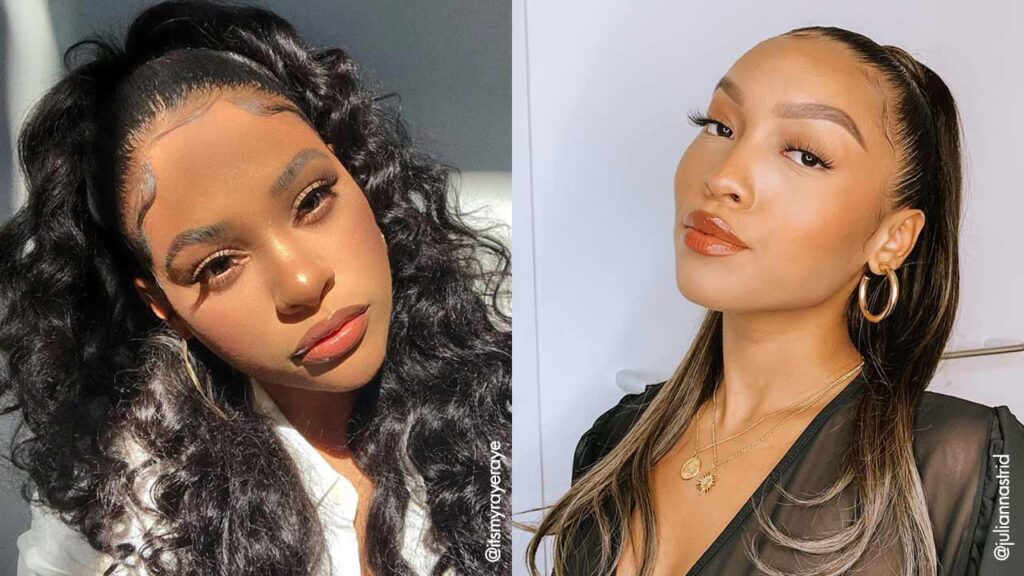Understanding Edges Hair: A Comprehensive Guide
Introduction
“Edges” refers to the fine hairs at the hairline, often referred to as “baby hairs,” particularly in the context of African-American hair care and styling. This article will explore the concept of edges hair, its cultural significance, styling techniques, and maintenance tips. We will also discuss the historical context and the evolution of styles involving edges, as well as address common questions in the FAQ section.
Table of Key Information
| Detail | Information |
|---|---|
| Definition | Fine hairs at the hairline, often styled for aesthetic purposes. |
| Cultural Significance | Important in African-American hair care and beauty standards. |
| Styling Techniques | Laid edges, swooped edges, finger waves, etc. |
| Tools for Styling | Hair gel, pomade, toothbrush, small brushes. |
| Common Issues | Lifting, flaking, damage from excessive styling. |
| Maintenance Tips | Regular cleaning, gentle styling, and hydration. |
| Historical Context | Evolved from traditional styles in the 1920s to modern trends. |
| Related Terms | Baby hairs, laid edges, swooped edges. |
What Are Edges Hair?
Definition and Characteristics
Edges hair refers to the fine, often shorter hairs that frame the hairline. These hairs can be more delicate than the rest of the hair and are typically styled to enhance the overall appearance of a hairstyle. Edges are particularly significant in African-American hair care, where they are often styled using various techniques to create a polished look.
Cultural Significance
The styling of edges has deep cultural roots, particularly within the African-American community. Edges are often seen as a reflection of grooming and self-care. The practice of laying edges has become a popular beauty trend, symbolizing attention to detail and personal expression.Historically, the styling of edges can be traced back to the early 20th century, where women would use various techniques to create defined hairstyles. The significance of edges has evolved, becoming a staple in modern hair care and styling.
Historical Context
Early Styles
The concept of styling edges can be traced back to the 1920s with the emergence of the “kiss curls” popularized by icons such as Josephine Baker. These styles involved curling and defining the hair at the edges to create a soft, feminine look.
The 1990s Revival
In the 1990s, the trend of styling edges saw a resurgence, particularly among African-American women. Influential musicians and celebrities, such as Chilli from TLC and Missy Elliott, popularized the “laid edges” look, which involved using hair gel or pomade to create sleek, defined edges. This period marked a significant cultural shift, where edges became a prominent aspect of beauty standards.
Modern Trends
Today, the styling of edges has evolved into various techniques and trends. Social media platforms have played a crucial role in popularizing diverse styles, with tutorials and inspiration shared widely. The term “laid edges” has become synonymous with polished hairstyles, often featuring intricate designs and patterns.
Styling Techniques for Edges Hair
1. Laid Edges
Laid edges, also known as swooped edges, involve using hair gel or pomade to smooth down the edges and create decorative swirls or waves. This technique is popular for its ability to enhance the overall hairstyle and create a polished look.
Steps to Lay Edges:
- Gather Tools: You will need hair gel or pomade, a toothbrush or small bristle brush, and a comb.
- Apply Product: Take a small amount of gel or pomade and apply it to the edges of your hairline.
- Brush and Style: Use the toothbrush or small brush to smooth down the edges and create desired shapes. You can create swoops, waves, or defined curls.
- Set the Style: Allow the product to dry to set the style. You can also use a scarf to lay the edges flat while the product dries.
2. Swooped Edges
Swooped edges are a variation of laid edges, where the hair is styled in a sweeping motion along the hairline. This technique adds a dramatic flair to hairstyles and is often used for special occasions.
Steps to Create Swooped Edges:
- Prepare Hair: Start with clean, dry hair. Apply a small amount of styling cream or gel to the edges.
- Create the Swoop: Using a comb, create a swooping motion with the edges by directing the hair in the desired direction.
- Secure the Style: Use a bobby pin or hairpin to secure the swoop if necessary, and allow the product to set.
3. Finger Waves
Finger waves are a classic styling technique that can be applied to edges for a vintage look. This method involves creating waves using fingers and styling products.
Steps to Create Finger Waves:
- Apply Mousse: Start with damp hair and apply a generous amount of setting mousse.
- Create Waves: Use your fingers to shape the hair into waves, pinning each wave in place with clips.
- Allow to Set: Let the waves dry completely before removing the clips. Finish with a light hairspray for hold.
Common Issues with Edges Hair
1. Lifting
One of the most common issues with styled edges is lifting, where the hair begins to rise from the scalp, losing its sleek appearance. This can occur due to humidity, product buildup, or insufficient product application.
2. Flaking
Flaking can occur when too much product is used or when the product dries out. This can lead to an unattractive appearance and may require reapplication or a different product.
3. Damage from Excessive Styling
Frequent styling of edges can lead to damage, including breakage and thinning of the hairline. It is essential to use gentle techniques and avoid excessive tension on the hair.
Maintenance Tips for Edges Hair
1. Regular Cleaning
Keep the edges clean by regularly washing the hairline to remove product buildup. Use a gentle shampoo and conditioner to maintain hair health.
2. Hydration
Hydrating the hairline is crucial for maintaining healthy edges. Use leave-in conditioners or oils to keep the hair moisturized and prevent breakage.
3. Gentle Styling
Avoid excessive tension when styling edges. Use soft brushes and avoid pulling on the hair to minimize damage.
4. Limit Product Use
Use styling products sparingly to prevent buildup and flaking. Opt for lightweight gels or creams that provide hold without weighing the hair down.
FAQ Section
Q1: What are edges hair?
A1: Edges hair refers to the fine hairs at the hairline, often styled for aesthetic purposes, particularly in African-American hair care.
Q2: Why are edges important in hair styling?
A2: Edges are important for creating a polished look and enhancing hairstyles. They can also reflect cultural beauty standards.
Q3: What products are best for styling edges?
A3: Hair gels, pomades, and edge control products are commonly used for styling edges. It’s essential to choose products that suit your hair type.
Q4: How can I prevent damage to my edges?
A4: To prevent damage, avoid excessive tension when styling, use gentle techniques, and keep the hairline moisturized.
Q5: What is the difference between laid edges and swooped edges?
A5: Laid edges involve smoothing down the hair to create a sleek look, while swooped edges feature a sweeping motion for a more dramatic effect.
Q6: Can I style my edges if I have short hair?
A6: Yes, even with short hair, you can style your edges using the same techniques. Adjust the styling methods to suit your hair length.
Q7: How often should I style my edges?
A7: The frequency of styling edges depends on personal preference. However, it’s advisable to give the hair a break to prevent damage.
Q8: Are there any cultural implications associated with styling edges?
A8: Yes, the styling of edges has cultural significance, particularly within the African-American community, where it reflects beauty standards and personal expression.
Conclusion
Edges hair plays a significant role in the world of hair styling, particularly within African-American culture. Understanding the techniques, maintenance, and cultural significance of edges can enhance your hair care routine and allow for creative expression. By embracing the beauty of edges, individuals can celebrate their unique styles while maintaining healthy hair.For more detailed information about hair and styling techniques, you can refer to the Wikipedia page on Laid Edges.



